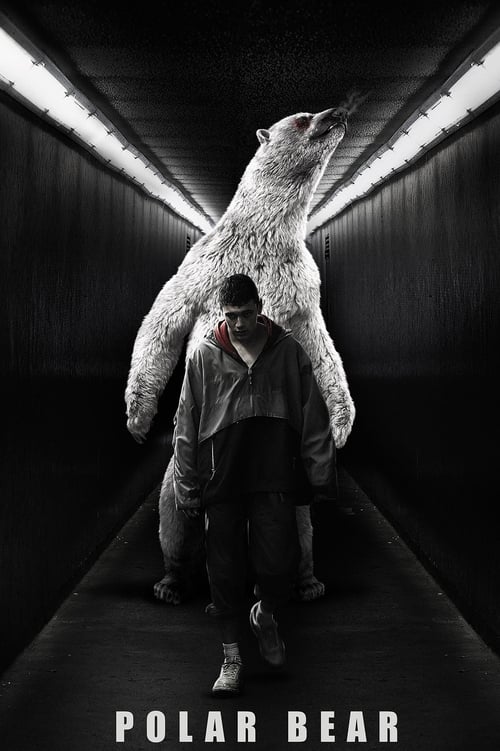
Ask Your Own Question
What is the plot?
What is the ending?
In the ending of the movie "Polar Bear," the main character, a young polar bear named Kallik, faces the harsh realities of survival in the Arctic. After a series of challenges, including the loss of her mother and the struggle to find food, Kallik ultimately learns to navigate her environment and adapt to the changing conditions. The film concludes with Kallik finding her place in the world, symbolizing resilience and the importance of family bonds.
As the final scenes unfold, Kallik is seen traversing the icy landscape, her fur glistening under the pale Arctic sun. The camera captures her solitary figure against the vast, white expanse, emphasizing her isolation but also her strength. She recalls the lessons taught by her mother, which echo in her mind as she faces the challenges ahead.
In a poignant moment, Kallik encounters a group of seals basking on the ice. Her instincts kick in, and she remembers the hunting techniques her mother demonstrated. With a mix of determination and trepidation, she approaches the seals, her heart racing as she prepares to hunt. The tension builds as she inches closer, her breath visible in the cold air, showcasing her internal struggle between the instinct to survive and the fear of failure.
As she lunges forward, the seals scatter, and Kallik is left with nothing but the cold wind against her fur. This moment of failure weighs heavily on her, but instead of succumbing to despair, she reflects on her mother's teachings about perseverance. The film captures her emotional state, showcasing her determination to keep trying despite the setbacks.
In the final scenes, Kallik finds a small group of other polar bears. They are wary at first, but she approaches them with a mix of caution and hope. The bears, sensing her resilience, begin to accept her into their group. This moment signifies Kallik's growth and her ability to adapt to her environment, as she learns that survival is not just about hunting but also about forming connections.
The film closes with Kallik standing alongside her new companions, gazing out over the horizon. The sun sets, casting a warm glow over the icy landscape, symbolizing a new beginning for her. The final shot lingers on her face, a mixture of hope and determination, as she embraces her new life in the Arctic.
In summary, Kallik's journey ends with her finding a sense of belonging and strength in the face of adversity, highlighting the themes of resilience, adaptation, and the importance of community in the harsh realities of the Arctic environment.
Is there a post-credit scene?
The movie "Polar Bear," produced in 2015, does not feature a post-credit scene. The film concludes its narrative without any additional scenes or content after the credits roll. The story wraps up with a focus on the emotional journey of the characters, leaving the audience with a sense of closure regarding the themes of family, survival, and the harsh realities of life in the Arctic.
What challenges does the mother polar bear face while raising her cubs?
The mother polar bear faces numerous challenges while raising her cubs, including the harsh Arctic environment, scarcity of food, and the constant threat from predators. She must navigate treacherous ice conditions and hunt for seals, which are her primary food source. The struggle to find enough nourishment to sustain herself and her cubs is a central theme, highlighting the difficulties of survival in a rapidly changing climate.
How does the relationship between the mother polar bear and her cubs develop throughout the film?
The relationship between the mother polar bear and her cubs evolves as they grow. Initially, the cubs are entirely dependent on their mother for warmth, food, and protection. As the story progresses, the cubs begin to explore their surroundings, testing their independence while still relying on their mother for guidance. The emotional bond is depicted through tender moments of nurturing and playful interactions, showcasing the mother's protective instincts and the cubs' curiosity.
What specific events lead to the cubs' first experiences with hunting?
The cubs' first experiences with hunting are triggered by their mother's need to teach them survival skills. After a period of foraging and observing, the mother takes them to a seal breathing hole. The tension builds as she demonstrates patience and stealth, showing the cubs how to wait for the right moment to strike. This pivotal moment is filled with excitement and anxiety, as the cubs learn the importance of teamwork and the thrill of the hunt.
What role does the changing environment play in the polar bear family's survival?
The changing environment plays a critical role in the polar bear family's survival, as the melting ice due to climate change affects their hunting grounds. The film visually depicts the shrinking ice caps and the challenges the mother bear faces in finding stable platforms to hunt from. This environmental shift creates a sense of urgency and desperation, forcing the family to adapt quickly to survive, which adds tension to their journey.
How does the film portray the dangers posed by other animals in the Arctic?
The film portrays the dangers posed by other animals, such as male polar bears and Arctic wolves, as significant threats to the mother and her cubs. Tense encounters are depicted where the mother must defend her young from aggressive males looking to assert dominance or from wolves that may see the cubs as prey. These moments are filled with suspense and highlight the constant peril in the Arctic, emphasizing the mother's fierce protective nature.
Is this family friendly?
"Polar Bear," produced in 2015, is a family-friendly film that primarily focuses on themes of nature, family, and the challenges faced by wildlife. However, there are a few scenes that might be considered potentially objectionable or upsetting for children or sensitive viewers:
-
Predatory Behavior: There are moments that depict the harsh realities of nature, including scenes where polar bears hunt for food. This may be intense for younger viewers.
-
Environmental Challenges: The film addresses the impact of climate change on polar bear habitats, which may evoke feelings of sadness or concern about the environment.
-
Separation and Loss: There are emotional scenes involving separation from family members or the loss of a parent, which could be distressing for some children.
-
Survival Struggles: The film portrays the struggles of the polar bears to find food and survive in a changing environment, which may be intense for sensitive viewers.
Overall, while the film is suitable for family viewing, these elements may require parental guidance for younger audiences.
















